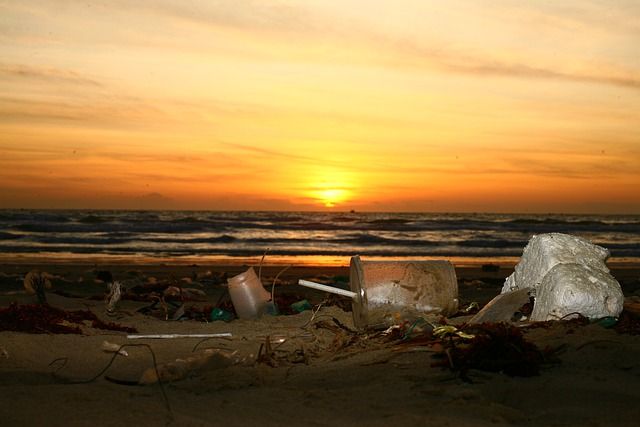The ocean plastic pollution from a Norwegian perspective

There is no doubt that the increasing plastic pollution of the world's oceans has also reached Norway. Plastic bottles, fishing nets and countless other plastic items can now be found even on the most remote coastline stretches in the far north of Norway and are no longer only a problem of heavily frequented beaches in the south of the country. Unsurprisingly, also the number of scientific literature addressing microplastics found in fish, pictures of marine mammals entangled in plastic waste, and observed seabirds starving despite a full stomach is increasing. Initiatives such as the recently enacted EU regulation on single-use plastic try to counteract the pollution of the oceans whereas e.g. the ATLANTIS project seeks to account for the impacts of plastics on marine ecosystems to better understand the effects of mismanaged plastics.
To invest the limited resources in research and sustainable mitigation measures in the best possible way, it is advisable to determine the current state of knowledge. This includes getting a greater picture of the extent of pollution as well as locating its source. Anyone who seeks to do so for the Norwegian case will quickly realise that no definitive statement can be made about the absolute amount of plastic pollution nor its concrete material composition. While global models and estimations exist, the Norwegian plastic pollution status has to be roughly estimated from beach clean-ups and documented losses from sea- and land-based waste sources. Especially the beach clean-ups indicate that waste from (industrial) fishing and aquaculture is mainly responsible for the increasing abundance of marine litter. According of a report published by Mepex in 2020, around 40% (weight-based) of the plastic found along the entire Norwegian coast could be attributed to the fishing industry, mostly consisting of ropes, trawls and other fishing gear. However, clear regional differences can be observed. While the relative share of plastic waste from the fishing industry rises with increasing latitude and accounts for almost 60% in the North of the country, plastic items from personal use dominate among the plastic items in the area around Oslo. A closer examination of found food packaging furthermore revealed that the vast majority of those that could be identified had their origin in Norway. Only 23% could be attributed to other countries, which gives valuable information regarding possible programmes to avoid littering or to mitigate possible shortcomings in the regional waste management systems in the future.
The adverse effects of marine plastic litter are manifold. For example, the number of Northern fulmars found with plastic residues in their stomachs has reached a worrying level. In addition, marine mammals and even land animals grazing at the coast are affected by entanglement in mainly fishing gear. This gear, often lost or deliberately abandoned, also causes ghost fishing and thus poses a serious threat to biodiversity and fish stocks in Norway. Even though the list of encountered species affected by entanglement and ingestion is comparably lower than the well-investigated regions of the North-Western Atlantic or Northern Pacific, the number of affected species and individuals is likely to increase with further investigation. Moreover, there are other effects such as smothering of marine fauna and corals or the rafting of pollutants and alien species on plastic litter. Especially if rafting affects sensitive ecosystems, vulnerable equilibria can be disturbed and irreversible damage can occur. Even though no published observations of smothering or rafting in Norway can be found, it is unlikely that these do not take place in Norwegian waters too. In general, further research is needed to estimate the negative effects of ocean plastic waste, its long-term effects on fauna and flora as well as its socio-economic implications.
But there is hope: a bunch of preventive and end-of-pipe solutions both of technical and non-technical nature are available. The great variety reaches from financial incentives, legal approaches, technical inventions to awareness raising initiatives. But it is up to us to initiate cooperation among research, politics, businesses, and the whole society to strive for the most sustainable solution that will eventually improve the situation in our oceans.
